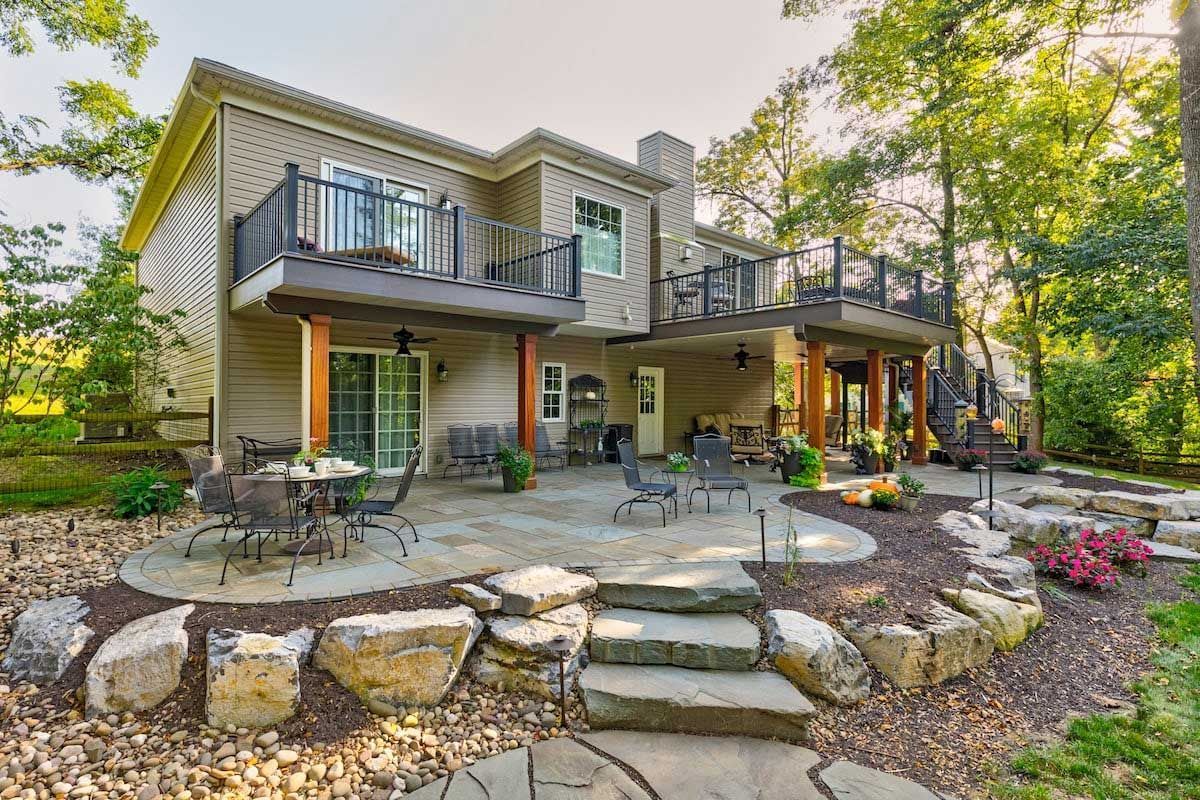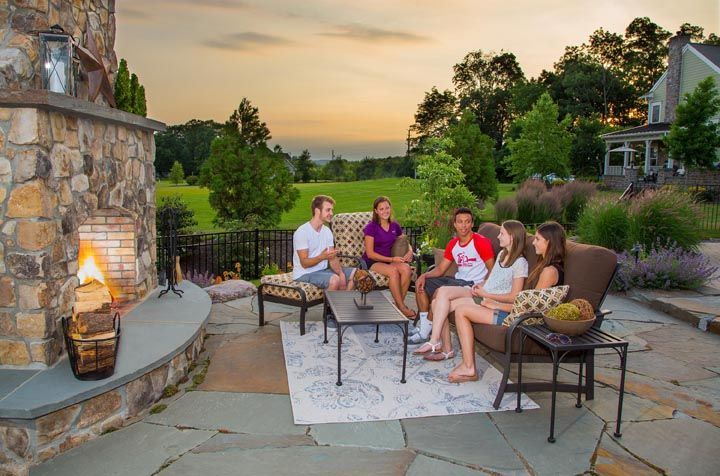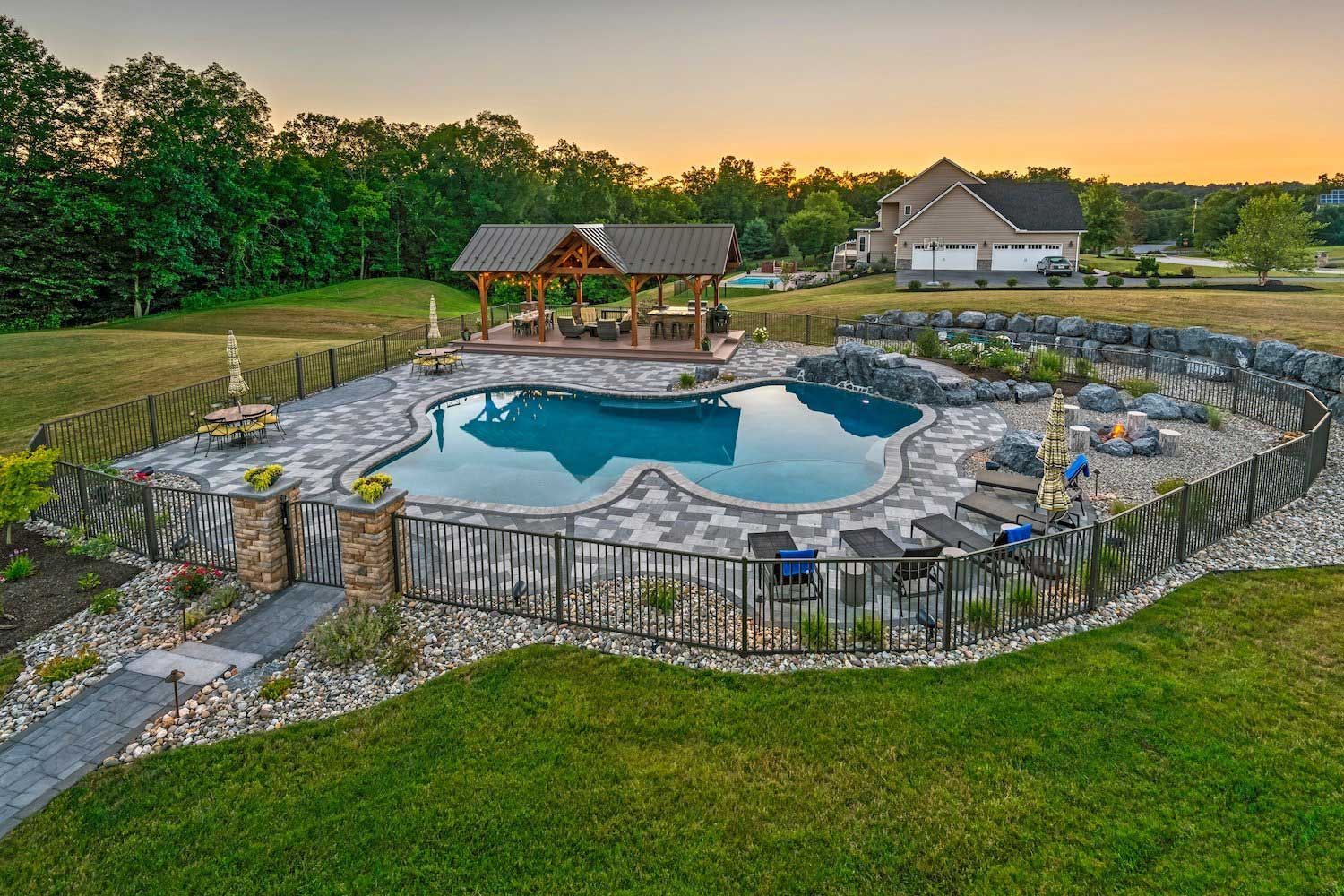Creating a Secluded Backyard Oasis with Privacy Trees & Shrubs
When it comes to creating privacy screening for our clients, we’ve had almost every request in the book. From screening out an objectionable view (such as a neighbor’s unmaintained backyard), to buffering some noise from a nearby highway, to even preventing the neighbor’s boys from watching the girls swim in the pool.
We’ve worked with all of these scenarios and then some. We know there are a lot of reasons why you want to create privacy in your backyard—and you deserve it. You’ve invested in an outdoor living space and now you want to enjoy it without prying eyes or unsightly views.
Of course, the first conclusion that might come to mind with privacy is a fence. While it’s true that a privacy fence could potentially block a view, it won’t necessarily block everything. A fence may also come with added maintenance that some people just don’t want to deal with. Oftentimes, privacy plants are the best way to create screening in a way that is more natural and sometimes even more effective than a fence. While privacy planting may sound easy to do, there are some important considerations to keep in mind.
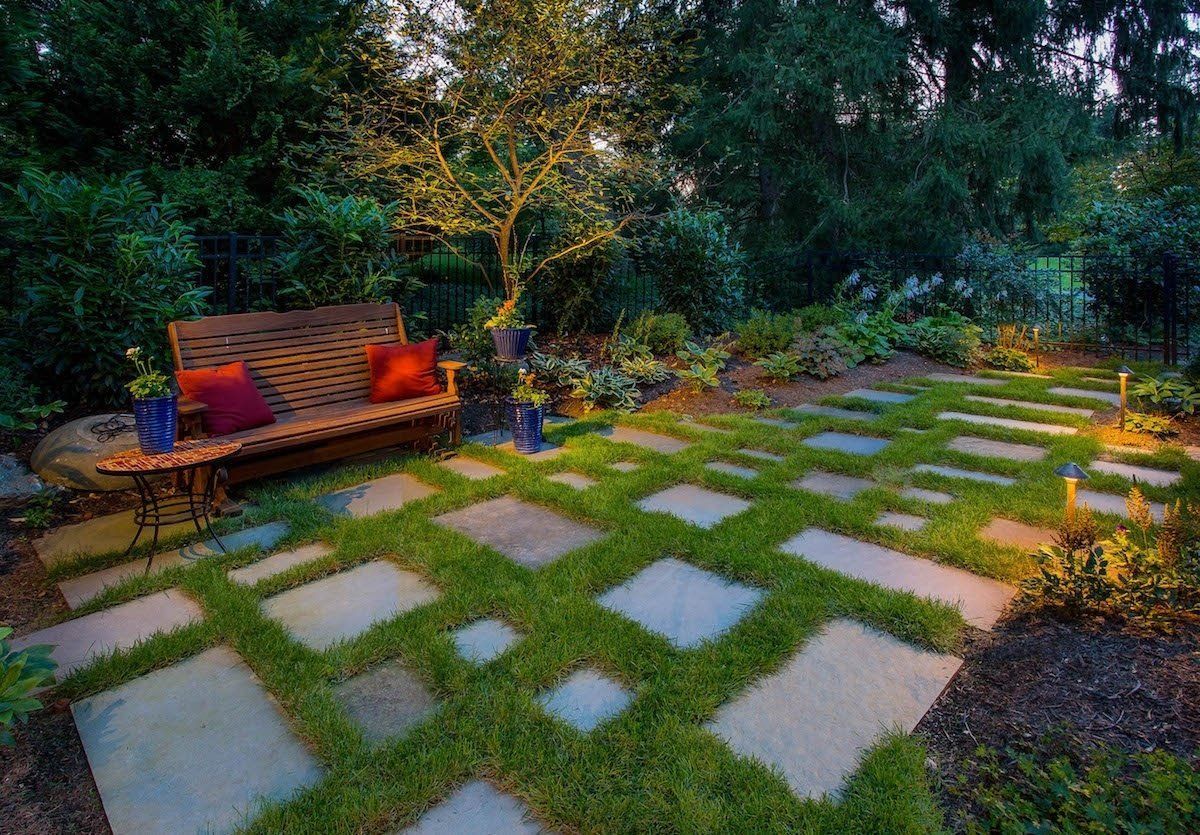
DIY Privacy Planting vs. Hiring a Pro
Planting privacy trees and shrubs may sound simple enough that you might consider tackling it on your own. However, when homeowners attempt DIY privacy planting, they often make mistakes that defeat the purpose such as choosing plants that are too small or that won’t fill out enough to block a view.
We often find that homeowners don’t consider the horizontal space that they have to work in. Some plants not only grow upward but outward, too. The placement of the plant is also crucial. Sometimes you can actually get more privacy by planting a tree or shrub closer to your patio or pool than planting it right along the border of your neighbor’s property (as people often do when they’re tackling privacy planting on their own).
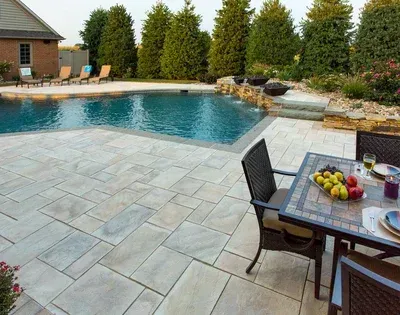
Sometimes a combination of fencing with trees and shrubs will help create a well-screened yard. If a pavilion is part of the project, maybe even a wall or even a roof might contribute to increased privacy. It all depends on the angles and the layout, which are points that will be considered by a Registered Landscape Architect (RLA).
At Earth, Turf, & Wood, when we work on a landscape design, we work with a plan that shows where the neighbors’ houses are as well as where anything else that you want to screen out is located. In other words, we’re looking at the big picture and we’re playing around with a lot of different placement ideas in order to figure out what works best. That level of detail is not something you’ll get when doing it on your own.
Using an RLA who has experience with planting privacy trees and shrubs is also going to ensure that you get the best privacy plants for your space and that they’re placed in the best possible way. An RLA will also ensure that it’s designed in a way that’s attractive so that it’s both functional and aesthetically appealing.
Just because you need privacy screening does not mean you need to line up a bunch of trees and shrubs in a row. When most people do a privacy screen of plantings on their own, they just plant arborvitaes in a long row. This is a layout that screams I’m trying to create privacy.
But you can still have privacy with a well-thought out landscape design. We’ll talk more about choosing the right combination of trees and shrubs, next, but the point is that you can have both beauty and privacy in a landscape that is given professional design attention.
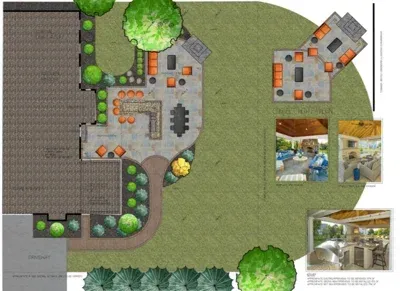
Choosing Privacy Trees and Shrubs
When it comes to the best possible screening for your landscape design, using a combination of different trees and shrubs will go a long way in creating a beautiful landscape. At ETW, our goal is to use a juxtaposition of color and plant type to make it as beautiful as it is functional.
Here are just some of the specific privacy trees and shrubs that we like to use in our privacy planting designs:
- Holly: They are dense, grow quickly, and are manageable. You can prune and shape them based on your needs. Multiple varieties of Hollies offer different leaf color, shape, and fruit-bearing ability. Hollies are also a favorite habitat of birds if you’re desiring more of the sweet sounds and sights of nature in your backyard.
- Spruce: It’s unique color and texture next to a dark Holly provides and interesting and beautiful contrast. Together, they provide some nice screening year round. Spruces come in various options with needles ranging from blue to deep green and offering varying features with slightly different growth habits.
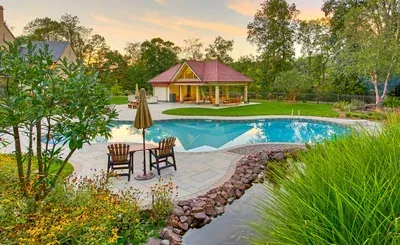
- Green Giant Arborvitae: One of the classic “privacy screening” plants out there, arborvitae is definitely an option to be considered—it just doesn’t have to be your only option. Green Giants are larger, conical trees, not the upright, smaller hedge variety that many people use.
- Japanese Cedar:
This type of large evergreen will go a long way in creating privacy due to its size and shape. It’s texture differs from many of the common evergreen trees in our area for a unique statement in a landscape.
- Various Grasses: We call them “extendable additions” because we like to plant grasses in between trees and shrubs to fill the gaps. Ornamental grasses come in all sorts of heights with varying options of colors, textures, and seed heads. Plus grasses grow pretty quickly, so that makes them a great choice to plant around sitting areas like in the picture shown here.
Understanding what plants work well and in what combination is definitely something that goes into a thoughtful design, prepared by a professional. But it’s not just DIYers that can make mistakes. A thoughtless approach to a privacy design is a mistake that even professional landscapers make if they don’t have the experience.
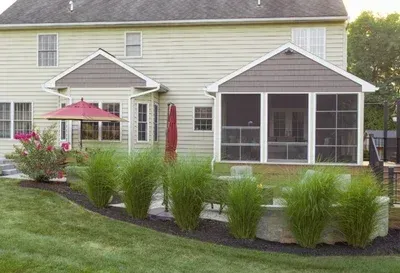
Privacy Planting Landscape Design for Lancaster, PA and Surrounding Areas
While a lot of landscaping companies might say that they offer privacy screening, it’s really important that you find a company that specializes in design since it’s not as simple as lining up some trees and shrubs.
It’s important to find a landscaping company that knows what they are doing since plants can be an investment—particularly for a large landscape project that requires a lot of screening. If you’re going to invest heavily in plant material, you want to feel confident that it’s going to survive.
At ETW, we offer a standard one-year plant warranty, which can be extended when homeowners sign up with us to maintain their landscape. If you are going to maintain your plants on your own, we’ll provide instructions on watering and upkeep. We want to help ensure that your landscape continues to thrive.
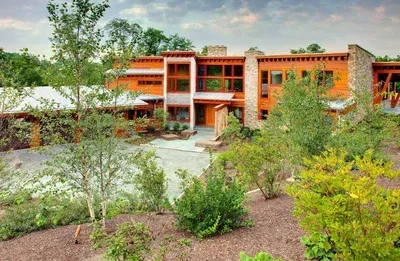
In addition to a warranty, you can also feel confident that you’re getting the experience and the know-how to get the best possible privacy planting design. We take all of the little details into account that can have an impact on the finished product. You’ll end up with a well-screened yard that not only meets your needs functionally but is also beautiful to look at. We believe you shouldn’t have to sacrifice one for another. With a good design, you can have the best of both worlds.
If you’d like to talk about creating privacy for your own backyard oasis, contact us for a free consultation or give us a call at (717) 721-3530.

Written by
Mary Dresser, RLA ALSA
Mary Hatch Dresser is a Registered Landscape Architect with a Bachelor’s degree in Landscape Architecture from the University of Georgia School of Environmental Design. Mary has designed landscapes for 32 years and joined ETW exclusively in 2009. Mary is a member of the American Society of Landscape Architects (ASLA); and also serves on the Shade Tree Committee in Strasburg Borough where she resides. Mary prides herself in carefully listening to her clients to professionally meld their ideas and personal criteria with sound, experienced design practice.
